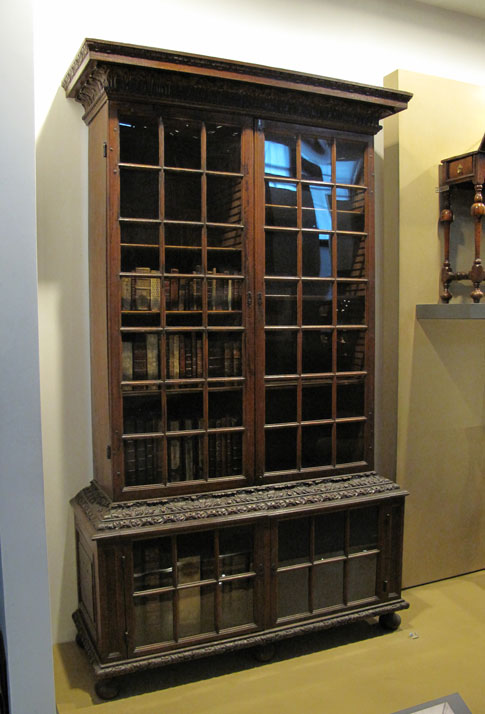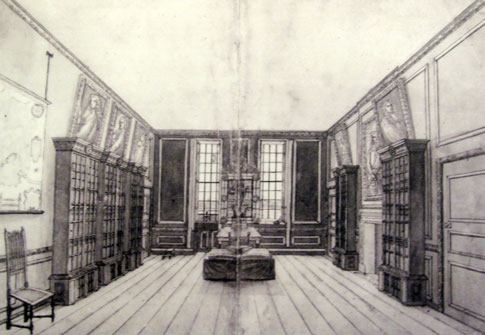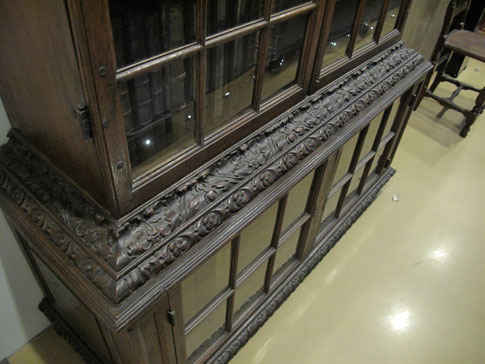
The Victoria & Albert Museum in London has some great furniture that’s squirreled away amongst the tapestries, sculpture and ceramics. Some of the pieces that I find most amazing (such as one of the earliest Morris chairs made by Morris & Co.) are tucked away in dark corners behind other objects.
But one of the personally most appealing pieces in the museum gets a lot of attention. It’s one of the first free-standing bookcases ever built, which shares an exhibit with a very early gate-leg table, caned chair and tall case clock.
According to the museum’s account, the first free-standing bookcase know was built for diarist and Naval administrator Samuel Pepys in 1666. The bookcases are shown clearly in his library, though I am not sure if they are mentioned in his diary.

The oak bookcase at the Victoria & Albert was built about 1695, probably for William Blathwayt, also a civil servant. The bookcases are similar in construction to the ones in Pepys’s library. The bookcase is in four pieces for easy assembly on-site (though the museum description did not say what the four pieces were — my guess would be plinth, lower case, upper case and top cap).
The doors are mullioned, which was all the rage at the time with the advent of sash windows. Each piece of glass is individually set into the frame. And the shelves are adjustable to accommodate different sizes of books.
After learning about a lot of forms of furniture that “evolved” through history, it’s almost shocking to see a new form that springs forth almost fully formed.
The piece was easily 8′ tall — that’s probably a bit too much for modern homes. But still, wouldn’t it be cool to build one like this for your woodworking books?
— Christopher Schwarz
